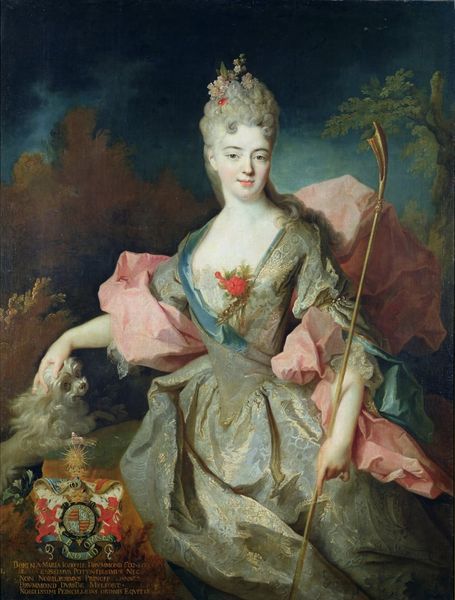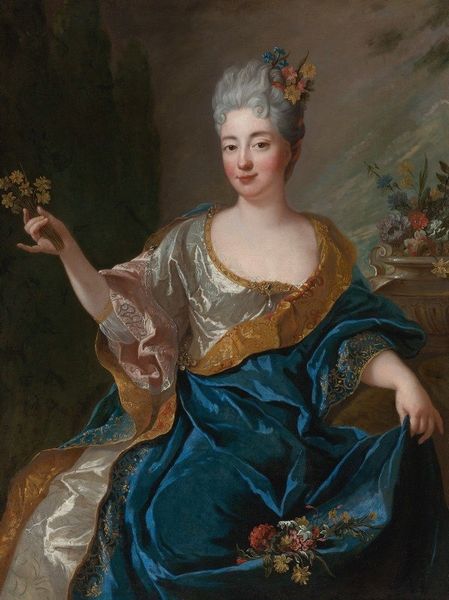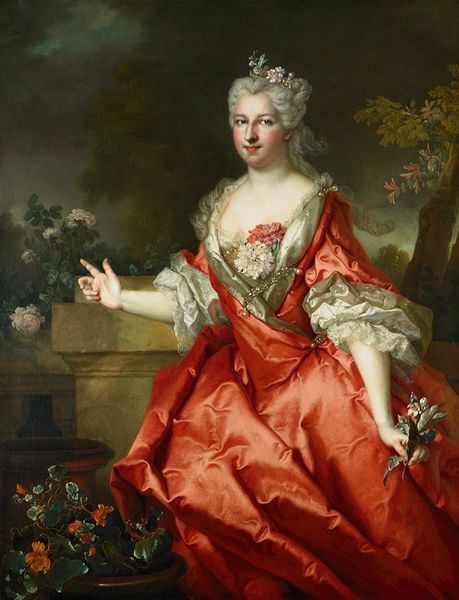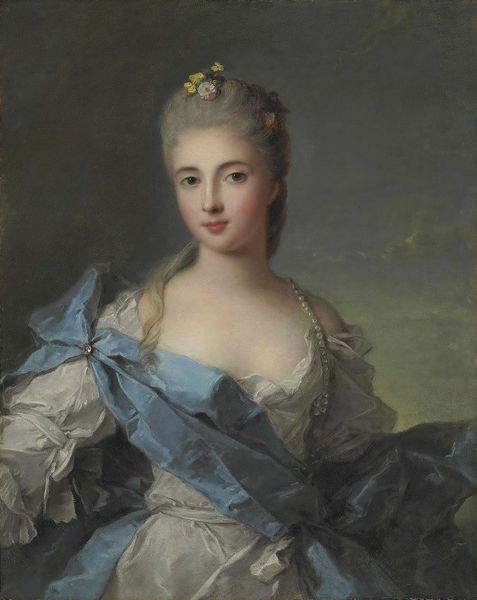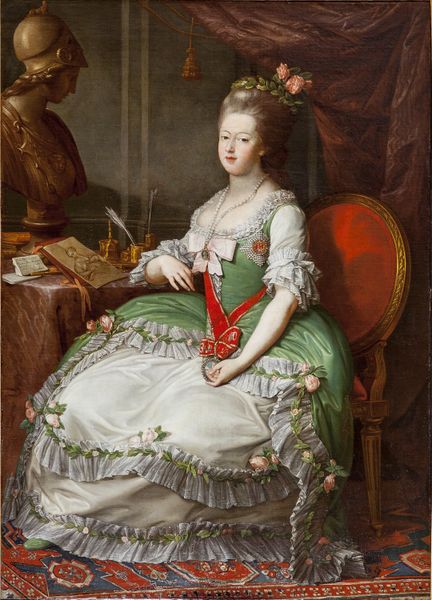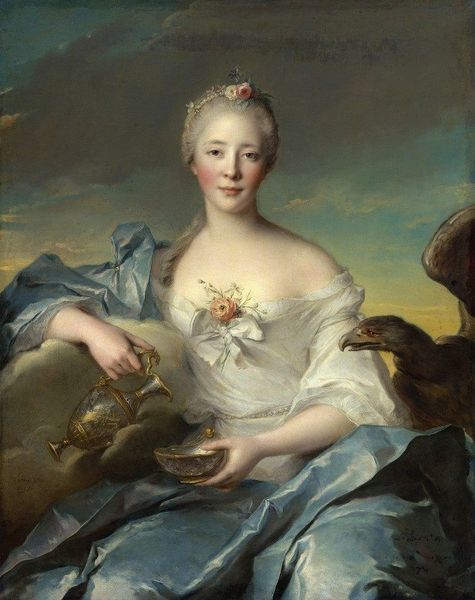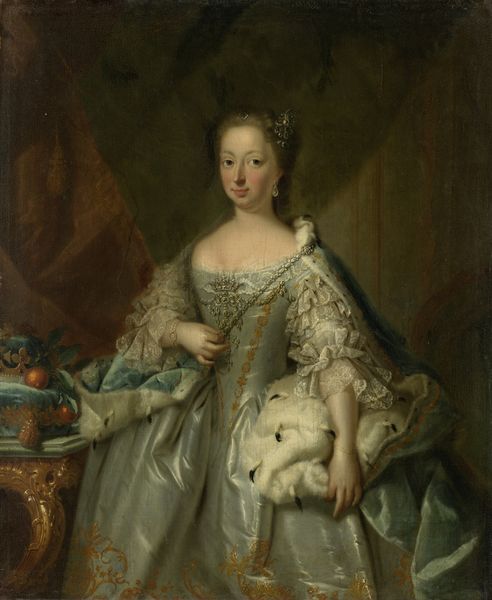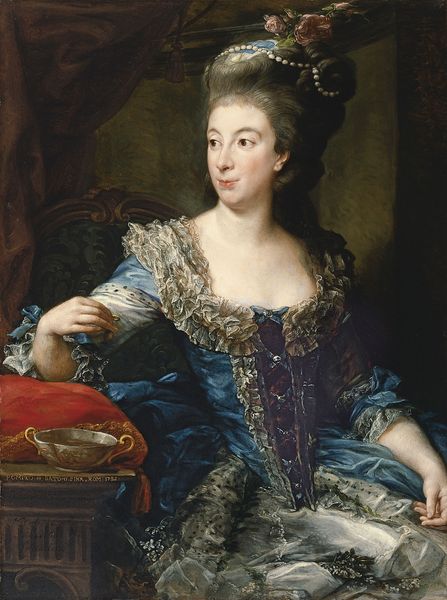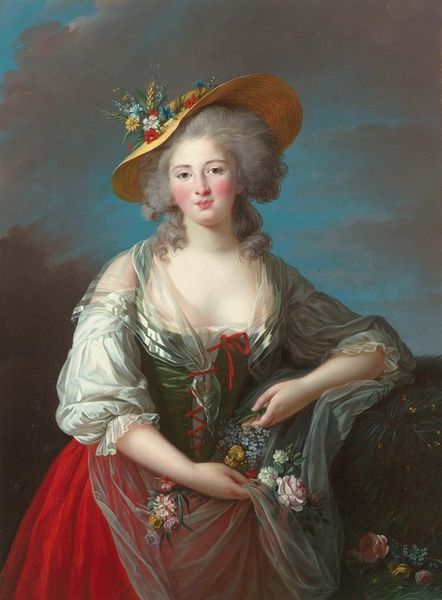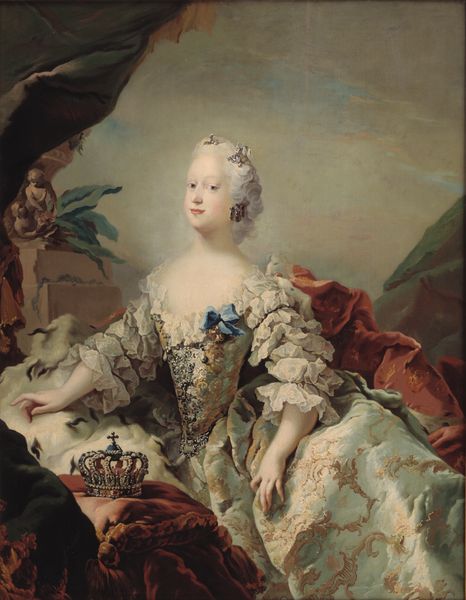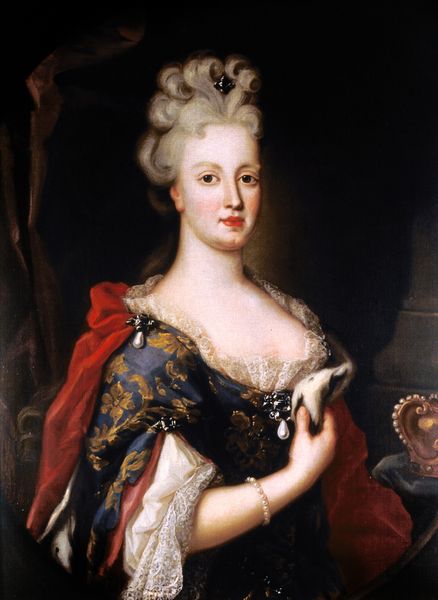
Copyright: Public domain
Marcello Bacciarelli painted this portrait of a woman, known as the Blue Marquise, during the late 18th century. Bacciarelli was an Italian painter who spent much of his career in Poland, becoming the court painter to King Stanisław August Poniatowski. Looking closely, we can decode the visual cues that speak to the social world of the Polish aristocracy. The woman's elaborate hairstyle, luxurious fabrics, and leisurely pose signal her high social status. The dog, often a symbol of loyalty and fidelity, also signifies her status as a member of the gentry. The architecture in the background, with its classical columns, hints at the influence of Western European culture on the Polish elite. To understand the painting fully, we might consult historical sources, such as letters, diaries, and fashion plates, to learn more about the customs and values of the Polish aristocracy during this period. The meaning of this artwork, like all others, is deeply embedded in the specific social and institutional contexts of its creation.
Comments
No comments
Be the first to comment and join the conversation on the ultimate creative platform.
